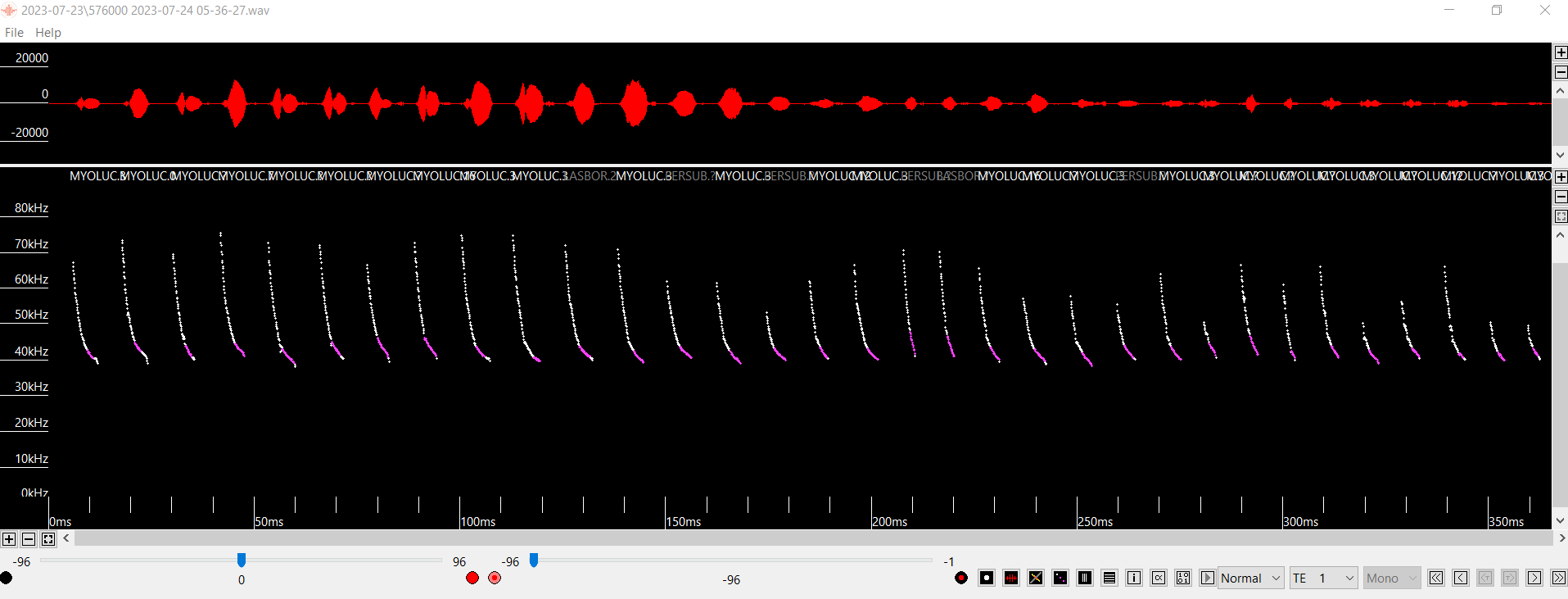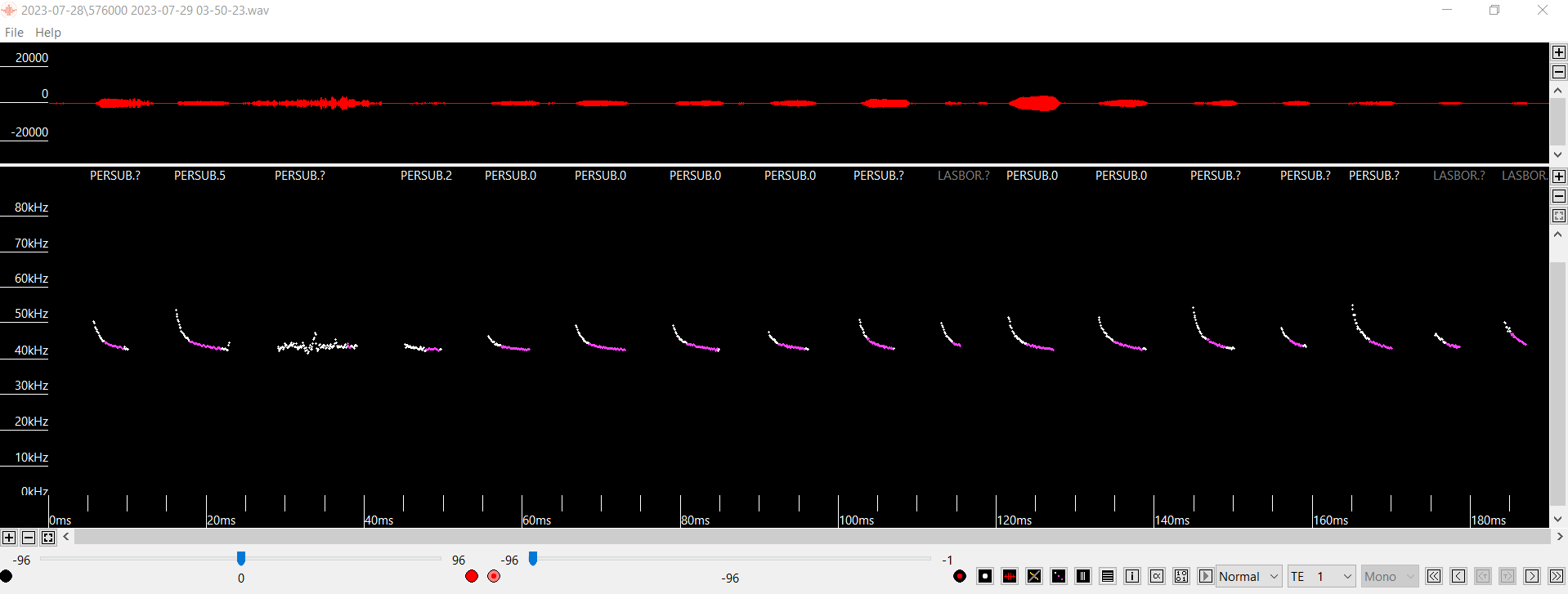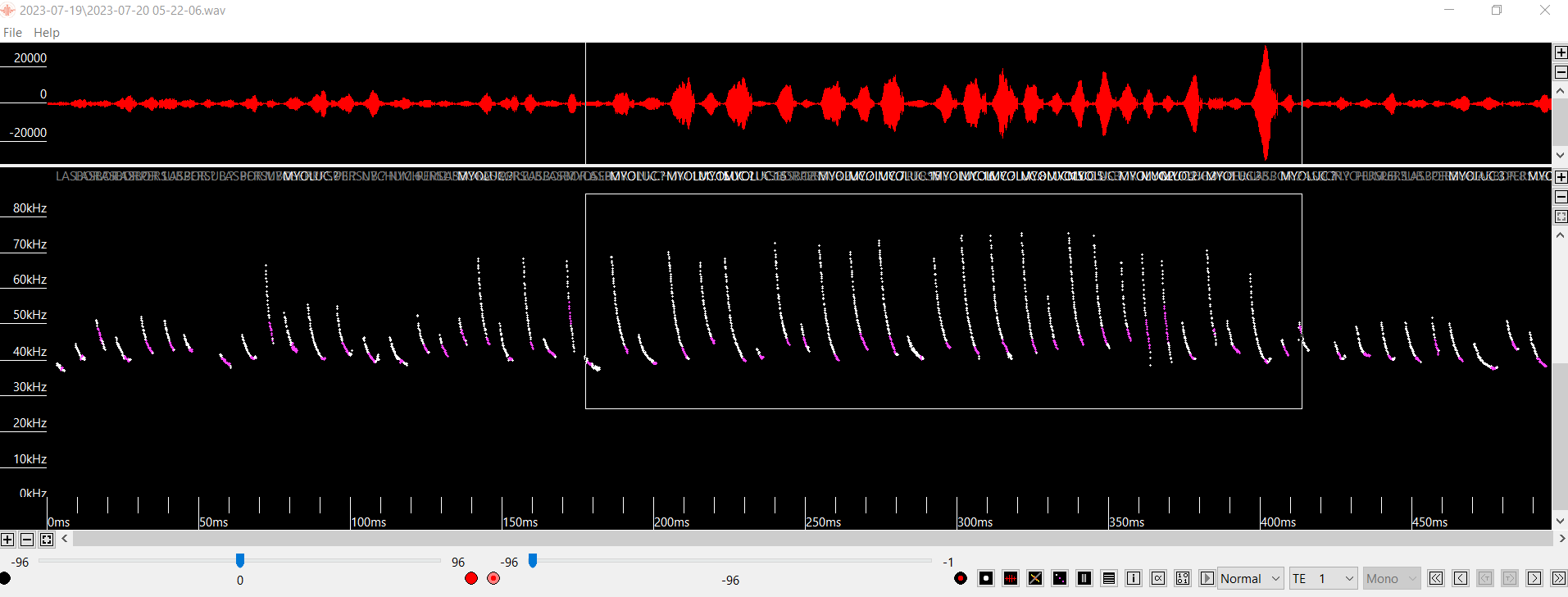Science in Motion.
Manual Vetting of Acoustic Bat Data
What is Manual Vetting?
Acoustic monitoring has become an industry standard for assessing bat activity, especially when presence/probable absence surveys are required for regulatory compliance. While modern detectors and auto-classification software have improved efficiency, these tools are not foolproof — especially when dealing with rare, threatened, or cryptic bat species.
Manual vetting is the process of having experienced, federally-permitted bat biologists carefully review, validate, and interpret recorded bat call data. This quality assurance step ensures that species identifications are as accurate and defensible as possible, reducing the risk of misidentification that could affect project timelines or regulatory outcomes.
Why Manual Vetting Matters
For projects that rely on acoustic surveys, the difference between an automated call file output and a manually vetted dataset can be significant. Overlapping call frequencies, background noise, and software misclassifications can lead to both false positives and missed detections.
Volant EcoServices’ manual vetting process adds a crucial layer of scientific integrity. Our team thoroughly reviews every echolocation file, comparing call structures, call quality, and site-specific acoustic conditions. This rigorous approach provides clients with accurate, defensible data for consultation with the U.S. Fish and Wildlife Service (USFWS) and state agencies.
Our Process
Our team of federally-permitted biologists have attended specialized acoustic analysis workshops and are trained in the latest techniques for analyzing bat call data.
Our workflow typically includes:
- Collecting high-quality acoustic data using advanced detectors following USFWS and state guidelines.
- Using industry-standard software to generate preliminary species classifications.
- Manually reviewing and verifying each detection to confirm or correct species identifications.
- Preparing clear, comprehensive reports with vetted call data, including spectrograms, site conditions, and survey methods.
Our reports meet the rigorous documentation requirements needed for Section 7 consultation, NEPA reviews, and other regulatory processes.
Supporting Regulatory Compliance
Manual vetting is especially critical when projects may affect federally listed species like the Indiana bat (Myotis sodalis) or the northern long-eared bat (Myotis septentrionalis), as well as other rare species that are often included in regulatory surveys throughout the eastern US like the little brown bat (Myotis lucifugus) and tricolored bat (Perimyotis subflavus).
Providing agencies with carefully vetted data builds trust, helps avoid costly delays, and demonstrates your commitment to high standards of conservation compliance. Whether your project involves infrastructure development, wind energy, transportation, or habitat management, our team delivers acoustic analysis you can rely on.
Manual Vetting for Existing Acoustic Datasets
In addition to collecting and analyzing our own field data, Volant EcoServices provides independent manual vetting services for clients who already have existing acoustic recordings. We understand that many project teams have invested in automated acoustic surveys but want to ensure the results are defensible, accurate, and in line with the most current USFWS guidelines.
If your organization has gathered call data using detectors for wind energy siting, infrastructure development, or conservation research, our experienced biologists can review and vet your files to verify species identifications. This careful, expert review helps reduce the risk of misidentification and ensures your results hold up to agency review and regulatory compliance standards.
Our manual vetting for existing datasets includes detailed examination of call quality, background noise, call structure, and habitat context. We provide clear documentation and explanations that strengthen your environmental assessments and support sound decision-making.
If you have existing acoustic data in need of objective review, our team is ready to provide careful, science-based vetting to support your project’s regulatory requirements and conservation goals.




